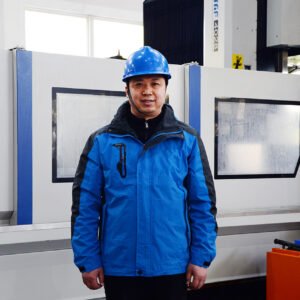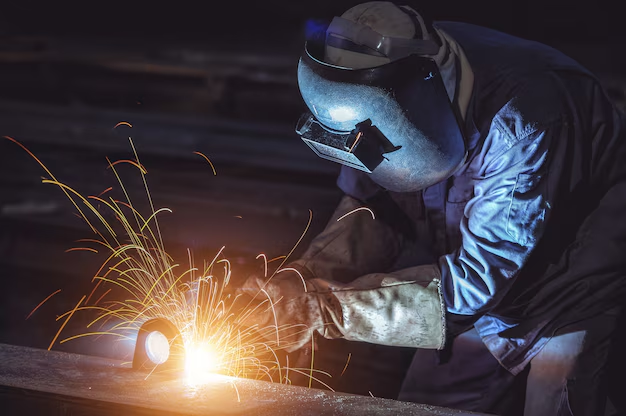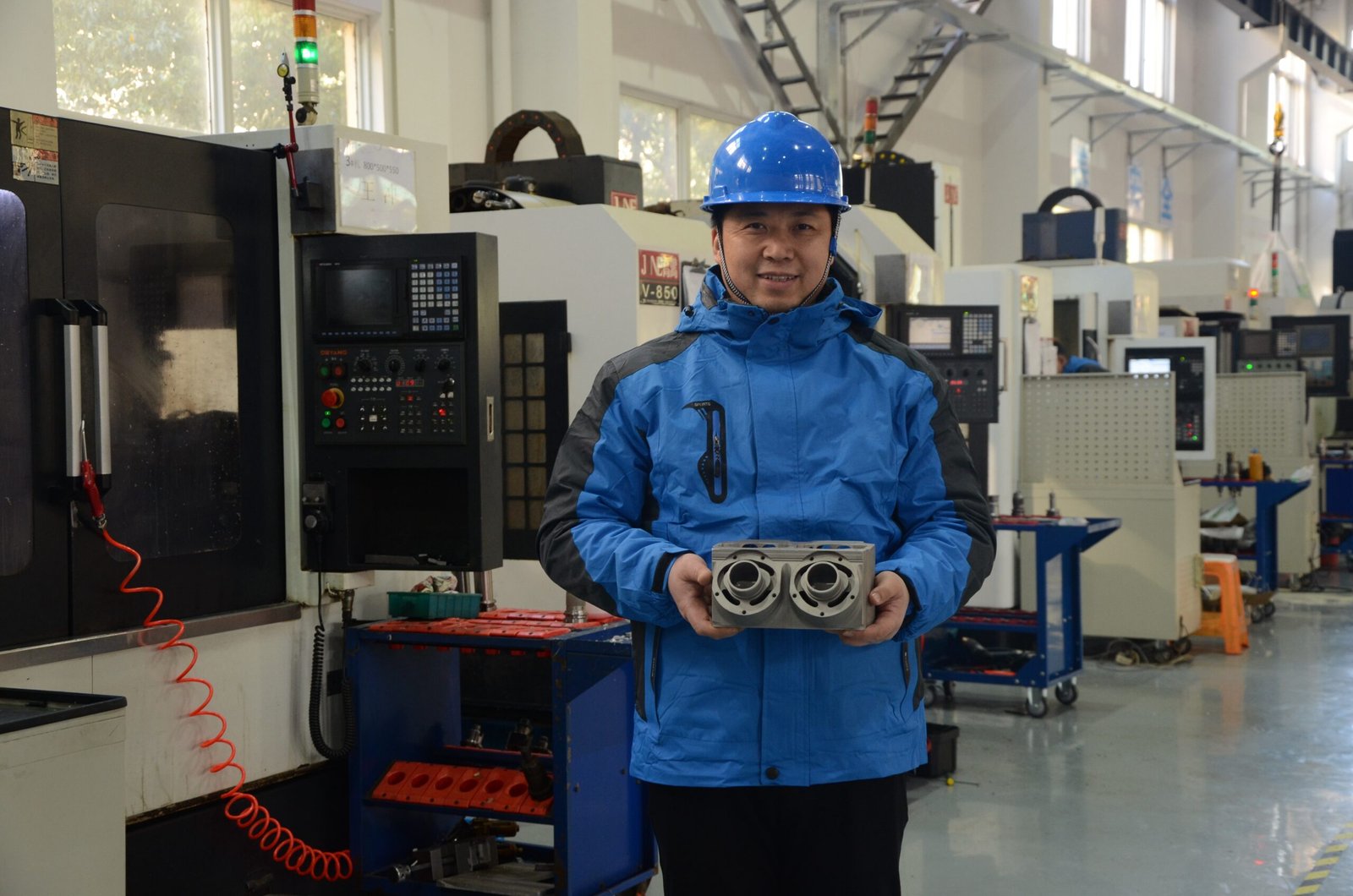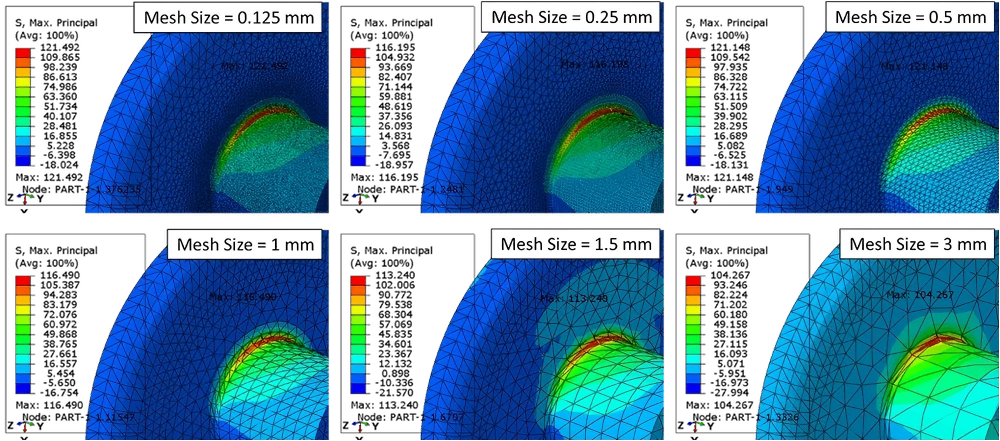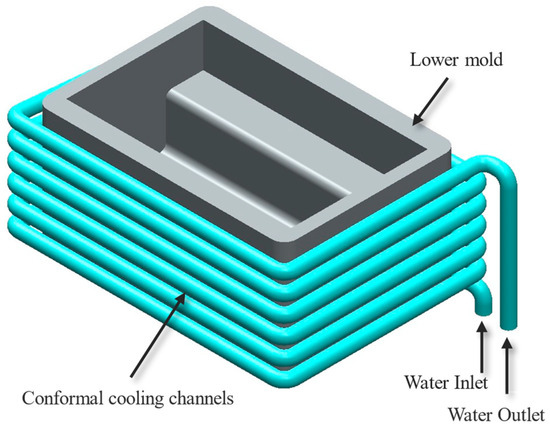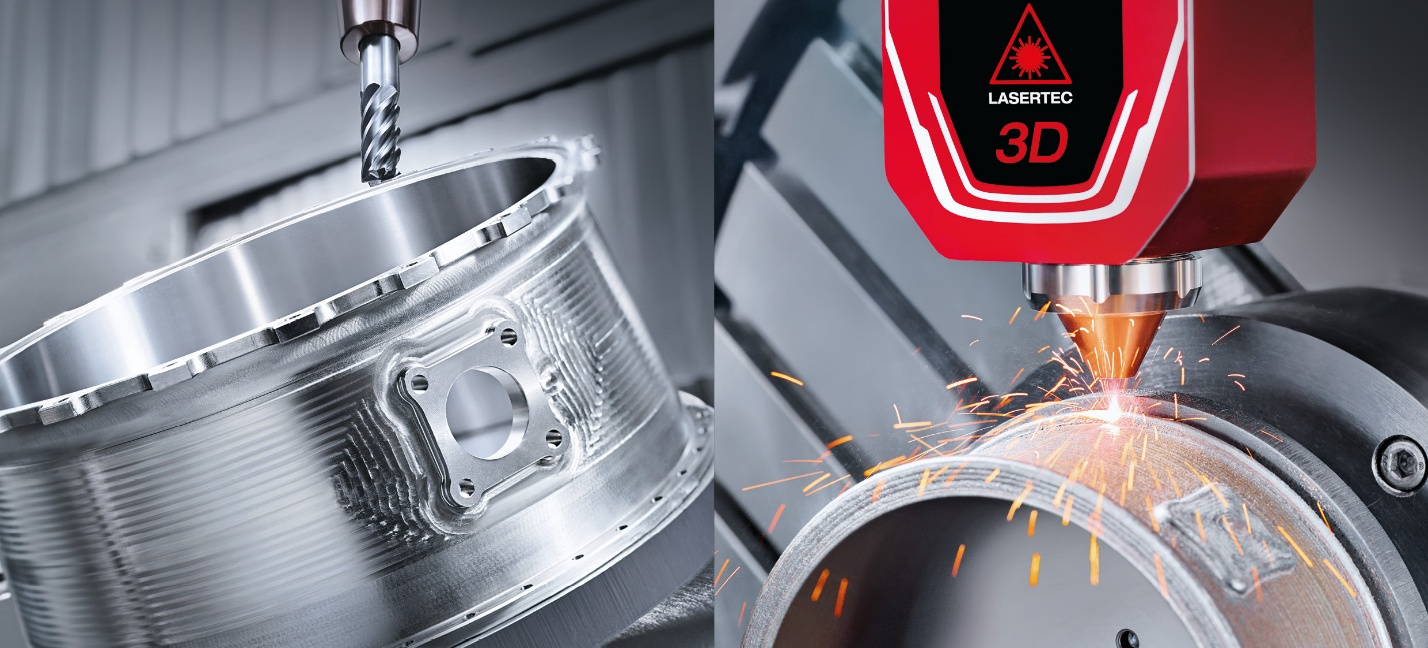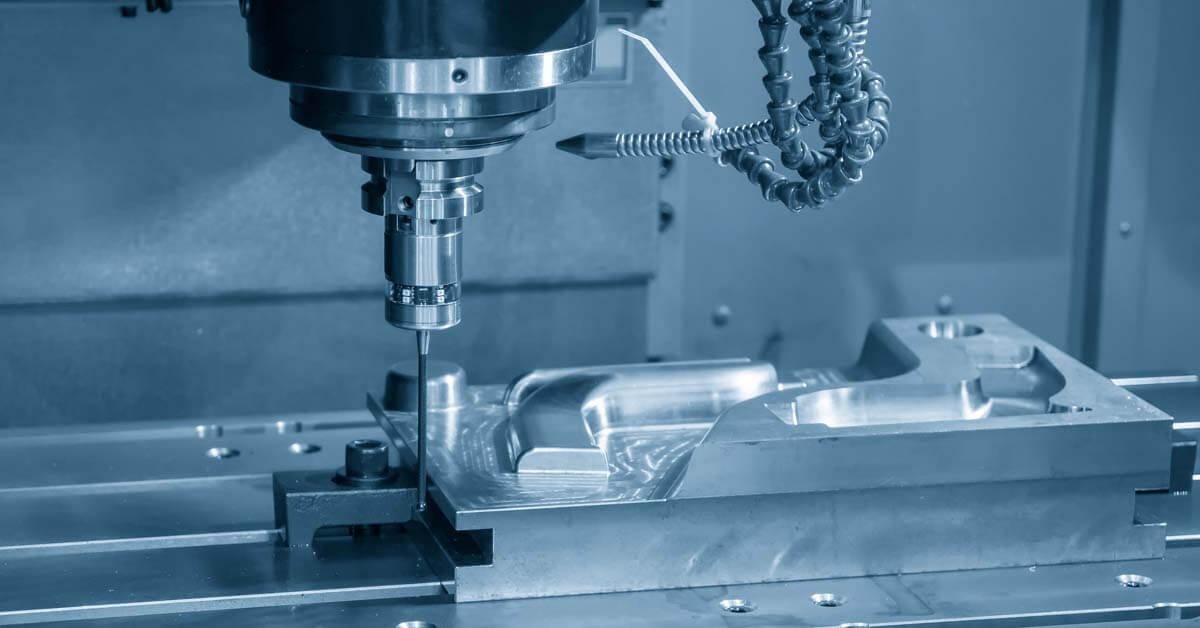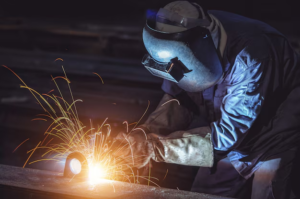
Why is vacuum welding favored in high-stakes sectors and what distinguishes it from conventional welding techniques? Conventional welding has long been the backbone of the industry, but it frequently faces difficulties with contaminants, oxidation, and uneven joint quality—problems that vacuum welding easily resolves.
Modern production relies heavily on vacuum welding, which makes it possible to create high-precision, contamination-free joints for sectors where perfection is essential. Vacuum welding is crucial for creating parts that can endure harsh environments and function with unmatched dependability in various industries, including electronics and aerospace.
In contrast to conventional welding methods, vacuum welding removes contaminants and produces a higher-quality bond by operating in a regulated, vacuum atmosphere. This specialized method is essential for sophisticated applications like semiconductor production and spaceship assembly because it guarantees that materials are fused with the least amount of distortion and the greatest amount of strength.
This article will discuss the foundations of vacuum welding, its special advantages, underlying technologies, and several high-tech sectors. Let’s learn how vacuum welding is influencing manufacturing in the future.
2. Understanding Vacuum Welding
A unique welding method called vacuum welding is used in a vacuum atmosphere to guarantee excellent connections with little oxidation, contamination, or porosity. Aerospace, electronics, and medical device manufacture are some of its applications, where strength, purity, and precision are crucial, and are best suited for this process.
Vacuum welding operates by creating a vacuum inside a sealed chamber, removing contaminants and gases from the atmosphere, and allowing materials to be joined without exposure to external pollutants. In this regulated setting, materials are heated and fused without coming into contact with contaminants that could erode the bond.
The vacuum prevents oxidation and guarantees molecularly clean bonding, producing joints with exceptional endurance and mechanical qualities. The vacuum welding process typically involves the following steps:
- Chamber Evacuation: To establish a low-pressure environment, the vacuum chamber is evacuated.
- Heat Source Application: Materials are melted and joined using high-energy sources such as lasers or electron beams.
- Weld Formation: A smooth, strong joint with few flaws is formed when the molten material solidifies.
Additionally, the vacuum atmosphere makes it easier to precisely regulate the distribution of energy, pressure, and temperature, guaranteeing consistent and dependable welds.
Comparison with Traditional Welding
| Aspect | Vacuum Welding | Traditional |
| Environment | Conducted in a vacuum chamber free of air. | Conducted using shielding gas in an open environment.
|
| Risk of Contamination | Effectively removes contaminants and oxidation. | Prone to contaminants and oxidation. |
| Weld Quality | Produces strong, clean, and precise welds. | External factors can affect weld quality. |
| Application | Used in critical industries like electronics and aerospace. | Common in general construction and fabrication. |
| Cost | Higher initial setup costs. | Relatively lower initial setup costs.
|
| Complexity | Requires specialized tools and knowledge. | It can be performed with simpler equipment.
|
Benefits Compared to Conventional Welding
- Preventing Oxidation: Vacuum welding keeps the joint from rusting or deteriorating by eliminating oxygen and moisture.
- Superior Surface Cleanliness: Better adhesion is ensured by the vacuum environment's reduction of surface contaminants.
- Welding Exotic Materials: In a vacuum, metals that are challenging to weld in regular circumstances, such as titanium, zirconium, and molybdenum, can be readily welded.
- Accuracy for Small Parts: Perfect for delicate jobs like assembling medical equipment or microelectronic components.
Vacuum welding has emerged as a key component of sophisticated manufacturing, providing unparalleled weld quality and increasing the range of materials that can be joined in sectors where accuracy and dependability are critical.
3. Types of Vacuum Welding Techniques
A variety of techniques are utilized in vacuum welding, each of which is intended to meet the demands of a particular material, application, or industry. Each technique uses the vacuum environment to solve particular problems and produce high-quality welds. The main categories of vacuum welding methods are as follows:
1. Vacuum Electron Beam Welding (EBW)
Overview: The electron beam welding method involves heating and joining materials in a vacuum chamber using a concentrated beam of high-energy electrons.
Benefits: It is perfect for welding thick sections and intricate geometries due to its high precision, deep penetration, and few heat-affected zones.
Applications include precision instruments, automobile parts, and aerospace components.
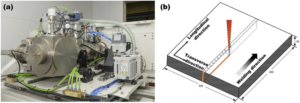
2. Vacuum Diffusion Welding
Overview: This Diffusion welding technique allows atoms to diffuse and form molecular bonds by pressing two surfaces together under pressure and heat in a vacuum.
Benefits: It creates incredibly clean and strong joints without the need for filler.
Applications: It includes electronics, nuclear reactors, and aerospace components.
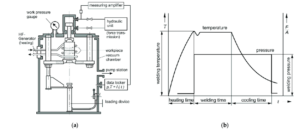
3. Vacuum Laser Welding
Overview: Materials are melted and fused in a vacuum using a laser beam as the heat source. The concentrated energy enables controlled and accurate welding.
Benefits include high speed, low distortion, and superb weld seam control.
Applications: It includes electronics, thin-walled buildings, and medical equipment.
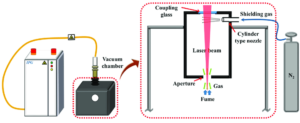
4. Vacuum Friction welding
Overview: This technique creates heat and fuses materials in a vacuum by combining pressure with rotational or linear motion.
Benefits include minimized flaws, no melting, and high joint strength.
Applications include the automotive and aerospace sectors, especially for dissimilar materials.
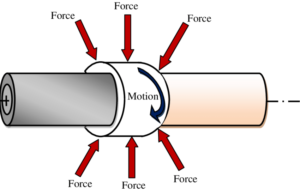
5. Vacuum Brazing
Overview: This vacuum brazing technique joins components without melting the base materials by melting a filler metal in a vacuum.
Benefits: Enables intricate assembly and the connecting of disparate metals.
Applications include electronic components, turbine blades, and heat exchangers.
6. Vacuum Arc Welding
Overview: An electric arc is created between an electrode and the workpiece in a vacuum chamber during vacuum arc welding, guaranteeing a contamination-free environment. High-purity and precise applications, such as those in electronics and aerospace, frequently employ this technique.
Benefits include great energy efficiency and clean welds with less contamination.
Applications: Structural elements and heavy machinery.
7. Hybrid Welding:
The accuracy and benefits of vacuum welding are combined with other welding methods, including arc or laser welding, in hybrid welding techniques.
By combining the advantages of several processes, these hybrid approaches allow manufacturers to tackle difficult welding problems with increased productivity and weld quality.
Advantage:
- Minimized contamination, which results in improved weld quality and strength.
- Improved control over the application of heat and faster welding speeds.
Application:
- Aerospace: Producing components that are strong but lightweight.
- Automotive: Manufacturing precise and long-lasting joints in vital components.
- Energy: Heat exchangers and turbine blades are welded for efficiency.
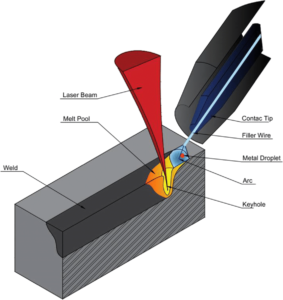
4. Vacuum Environment and Equipment
Vacuum welding requires a vacuum atmosphere because it removes airborne gases like oxygen, nitrogen, and water vapor that can oxidize, contaminate, or induce porosity in welds. To accommodate the welding process and material requirements, the vacuum level—which is commonly expressed in millibars or torr—is meticulously regulated.
Low Vacuum: Ideal for less demanding applications where a certain amount of residual gas is acceptable.
High Vacuum: Necessary for high-precision welding, which guarantees almost complete contamination elimination.
Equipment Used in Vacuum Welding
1. Vacuum Chamber
The welding process takes place in a sealed container. Generate and sustain the vacuum. LChambers of different sizes are used for different purposes, such as large chambers for industrial uses and tiny ones for precision components
2. Vacuum Pumps
IExtracting gasesand air from the chamber. is necessary Diffusion pumps, rotary vane pumps, and turbomolecular pumps are common varieties. The chosen vacuum level and chamber size determine which pump is best.
3. Welding Source
For accurate, deep welding, an electron beam with high energy is used.
A laser beam is a concentrated energy source that enables precise and fast welding.
Arc welding apparatus: utilized in hybrid processes that blend arc and vacuum procedures.
4. Control System
For reliable outcomes, sophisticated technologies control the welding parameters, temperature, and pressure. Automated controls decrease human error and increase efficiency.
5. Material Handling System
To ensure stability and accuracy during welding, robotic arms or fixtures position and hold components within the chamber.
5. Applications of Vacuum Welding
In fields where strength, purity, and accuracy are crucial, vacuum welding is essential. It is appropriate for a variety of applications due to its capacity to create joints that are both high-quality and free of defects:
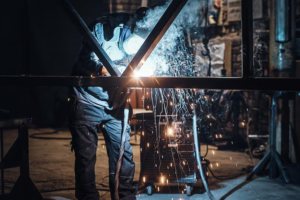
1. Aerospace Industry
welding lightweight, high-strength materials, such as aluminum alloys and titanium, for use in spacecraft and airplane parts.
2. Electronics Industry
connecting sensitive parts in sensors, semiconductors, and microelectronics. In creating hygienic, contaminant-free connections for devices with great performance.
3. Medical Devices
producing precise welds for implants, surgical tools, and diagnostic devices. It guarantees longevity and biocompatibility in medical applications.
4. Energy Sector
Manufacturing vacuum-sealed chambers, heat exchangers, and nuclear reactor components. Manufacturing robust, leak-proof pipeline and turbine joints.
5. Automotive Industry
Welding lightweight materials for high-performance engines and electric cars. using different metals to increase structural integrity and fuel efficiency.
6. Research and Development
It helps in producing particle accelerators, vacuum apparatus, and experimental configurations. It allows for accurate manufacture for cutting-edge research.
7. Defense and Military
Manufacturing joints with high strength for vital defense system components. In producing armored vehicles, aerospace defense equipment, and missile parts.
8. Optics and Laser Systems
Building laser systems and precise optical parts for use in industry and research.
6. Advantages of Vacuum Welding
The many advantages of vacuum welding make it the go-to option for sectors needing accuracy and dependability. The following are its main benefits:
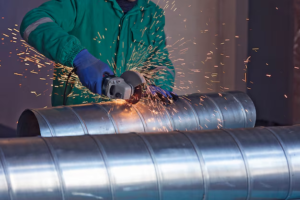
1. Outstanding Weld Quality
eliminates porosity, oxidation, and impurities by functioning in a vacuum environment free of contaminants.
produces joints with high structural integrity that are clear and devoid of defects.
2. Accuracy and precision
produces extremely precise welds appropriate for complex and fragile components by allowing for precise control over the welding conditions.
3. Suitable for Reactive Substances
appropriate for joining delicate and reactive materials that are prone to oxidation under conventional welding settings, such as aluminum, zirconium, and titanium.
4. Strong and robust joints
produces bonds that are perfect for high-performance applications because of their improved strength and outstanding mechanical qualities.
5. Minimal Heat-Affected Zone (HAZ)
The material's original characteristics are preserved by the Minimal Heat-Affected Zone (HAZ), which lowers thermal distortion and residual stress.
Perfect for components that are heat-sensitive or have thin walls.
6. Adaptability
It can be used to combine momparable and dissimilar, materials such as metals and alloys with different melting points.
allows for multi-component constructions and complicated shapes.
7. Less Post-Processing Is Needed
It saves time and money by producing clean welds that need little to no extra polishing.
8. Improved Dependability in Vital Uses
guarantees excellent performance and longevity in sectors where failure is not an option, such as electronics, medical devices, and aerospace.
9. Eco-Friendly
It reduces waste and the impact on the environment by doing away with the requirement for shielding gases or fluxes.
7. Challenges and Limitations
Although vacuum welding has several advantages, manufacturers should be aware of the following drawbacks and restrictions:
1. High Initial Cost
- Equipment expenses: The purchase and upkeep of vacuum chambers, pumps, and specialized welding sources are expensive.
- Setup Costs: A substantial infrastructure investment is necessary to establish a vacuum welding facility.
2. Equipment Complexity
- Advanced Technology: Skilled workers and routine maintenance are required to operate and maintain vacuum systems.
- Downtime: Production may be interrupted by vacuum chamber leaks or system malfunctions.
3. SizeRestrictions
- Chamber Restrictions: The dimensions of the components that can be welded are limited by the vacuum chamber's size.
- Scalability: It might not be possible to weld really big components.
4. Extended Processing Duration
- Pump-Down Time: Compared to traditional techniques, welding takes longer when a vacuum atmosphere is created.
5. Compatibility of Materials
- Restricted Metals: Vacuum welding works best on metals and might not be feasible on non-metals.
- Surface Preparation: To prevent contamination within the vacuum chamber, materials must be carefully cleaned.
6. Restricted Accessibility
- Specialized Applications: Vacuum welding is less accessible for common manufacturing because it is mainly utilized in high-value, precision-oriented industries.
7. Use of Energy
- Power Requirements: High-energy welding sources and vacuum pumps use a lot of power, which raises operating expenses.
8. Learning Curve
- Training: To operate machinery and uphold quality standards, operators require specific training.
- Error Sensitivity: Defective welds may result from minor parameter variations.
8. Quality Control in Vacuum Welding
In vacuum welding, upholding high standards is crucial to guaranteeing accuracy, dependability, and safety. To attain faultless outcomes, quality control includes several procedures before, during, and following the welding process.
1. Preparation for Prewelding
Cleaning of Materials: Each material is thoroughly cleaned to remove contaminants, such as oils, grease, and oxides, which could compromise the integrity of the weld. Typical cleaning techniques include mechanical polishing, chemical cleaning, and ultrasonic cleaning.
Vacuum Chamber Integrity: Ensuring the vacuum chamber is clean and free of contaminants is critical for maintaining weld quality. To keep things in top shape, routine maintenance and leak testing are carried out.
2. Monitoring an In-Process
Real-Time Information Gathering: Real-time monitoring of parameters like temperature, pressure, and other variables helps maintain process consistency and ensures optimal welding conditions. Sophistic sensors and control systems are employed to track data precisely.
Parameter modifications: To ensure welding conditions remain within predefined tolerances and avoid defects, automated systems or skilled operators adjust parameters as needed.
3. Testing After Welding
Non-Destructive Testing (NDT): Techniques like dye penetrant testing, ultrasonic testing, and X-ray inspection are employed to detect surface or internal flaws without damaging the weld.
Leak Testing: Leak testing ensures that the weld is tight and free from defects that could compromise its functionality, using vacuum or helium leak detection methods.
Visual and Dimensional Inspection: The weld is visually inspected for visible defects, such as uneven seams, porosity, or cracks. Dimensional measurements ensure compliance with design specifications. Dimensional tests guarantee that the weld satisfies design requirements.
9. Advancements in Vacuum Welding
These developments are expanding vacuum welding's use outside conventional applications while simultaneously increasing its effectiveness and dependability. This technology will remain relevant in meeting both present and future production demands due to its ongoing development.
1. Better Design for Vacuum Chambers
- Larger and Modular Chambers: The creation of larger and modular vacuum chambers enables more flexibility in industrial applications and the welding of larger components.
- Improved Sealing Technologies: New materials and methods make vacuum seals more dependable and long-lasting, which lowers maintenance expenses and downtime.
2. Robotics and Automation
- Automated Material Handling: By precisely positioning and aligning components, robotic systems can increase productivity and consistency.
- Smart Control Systems: Real-time monitoring and automated changes for the best welding performance are made possible by the combination of artificial intelligence (AI) and machine learning.
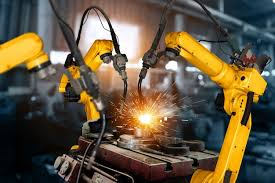
3. Advanced Welding Sources
- High-Power Laser Systems: More recent laser systems provide more precision, higher welding speeds, and greater energy efficiency.
- Hybrid Techniques: More flexibility and better joint quality are possible when vacuum welding is combined with other procedures, such as laser-arc hybrid welding.
4. Analytics and Real-Time Monitoring
- Integrated Sensors: During the welding process, sophisticated sensors provide actionable data by monitoring variables including temperature, pressure, and weld pool dynamics.
- Data analytics: Predictive analytics and big data assist in spotting possible problems before they arise, guaranteeing constant quality.
5. Innovation in Materials
- Improved Material Compatibility: Composites and advanced alloys are among the materials that can be successfully vacuum welded thanks to research into coatings and surface treatments.
- Decreased Surface Preparation: Advances in material preparation and cleaning techniques cut down on the time and effort needed before welding.
6. Improvements in Sustainability
- Energy-Efficient Systems: The creation of welding sources and pumps with reduced energy consumption reduces operating expenses and their negative environmental effects.
- Recyclable Components: Using recyclable materials in the production of equipment is a focus that supports sustainability objectives.
7. Portable Vacuum Welding Systems:
- Compact Equipment: New portable vacuum welding devices eliminate the requirement for large-scale setups by making the technology available for on-site applications.
8. Sophisticated Testing After Welding
- Improved NDT Methodologies: Better non-destructive testing techniques, like sophisticated ultrasonic and 3D imaging, guarantee even greater precision in identifying flaws.
- Robotic inspection technologies minimize human mistakes and expedite post-weld assessments.
10. Future Trends and Innovations
Vacuum welding's future is influenced by the industry's changing needs and the quick development of technology. The following significant developments and trends are probably going to have an impact on the creation of this cutting-edge technology:
1. The Combination of Machine Learning and Artificial Intelligence (AI).
- Predictive Maintenance: AI-powered tools can anticipate equipment malfunctions, reducing downtime.
- Optimize welding Parameters: The most effective welding settings for different materials and geometries can be found by analyzing data using machine-learning techniques.
- Error Detection in Real Time: AI-powered monitoring tools can spot and fix welding flaws.
2. Equipment Miniaturization:
- Portable Vacuum Welding Machines: More flexibility will be possible for on-site applications with the development of small, portable systems.
- Micro-Welding Capabilities: Vacuum welding's ability to fuse incredibly tiny components due to advancements in precision is essential for electronics and medical equipment.
3. Multi-material and Hybrid Welding
- Smooth Integration: For more adaptability, future processes will integrate vacuum welding with other welding techniques or additive manufacturing.
- New Material Combinations: Its uses will grow as a result of improved methods for combining disparate materials, like metals and composites.
4. Energy Efficiency and Sustainability
- Green welding systems: These include the creation of vacuum pumps that use less energy and welding sources that use less energy.
- Eco-Friendly Materials: More recyclable materials are being used in vacuum welding tools and procedures.
5. Sophisticated Control and Monitoring Systems
- Digital twins: There are computerized representations of the welding process used for troubleshooting, optimization, and simulation.
- IoT Integration: Using Internet of Things (IoT) technology, several vacuum welding systems can be remotely monitored and controlled centrally.
6. Improved Vacuum Equipment
- Ultra-High Vacuum (UHV): More widely available UHV systems for incredibly precise applications such as quantum technology and space exploration.
- Dynamic Vacuum Control: Systems with the ability to modify vacuum levels during welding to maximize circumstances for particular procedures are known as dynamic vacuum control systems.
7. Increased Compatibility of Materials
- Advanced Alloys and Composites: Ongoing investigation explores welding methods for materials of the future, such as carbon-based composites and high-entropy alloys.
- Surface engineering: novel coatings and surface treatments that shorten preparation times and enhance weldability.
8. Innovations Particular to the Industry
- Aerospace: Tailored vacuum welding equipment for putting together components of spacecraft and next-generation aircraft.
- Medical Devices: Minimally invasive surgical instruments and precise methods for biocompatible implants.
- Energy Sector: Better techniques for producing parts for wind turbines and hydrogen storage tanks, among other components for renewable energy systems.
9. Collaborative robots
- Robotics Integration: Reduce operator fatigue and increase production using cobots that can vacuum weld. Robots with intelligent adaptability can independently adapt to changing welding conditions and component types.
11. Case Studies and Examples
These case studies show how vacuum welding has been effectively used in a variety of industries, assisting businesses such as SpaceX, Tesla, Medtronic, and CERN in overcoming particular obstacles and producing excellent outcomes.
- Aerospace Sector: SpaceX Produces Rocket Components
Scenario: SpaceX, a well-known aerospace corporation, fabricated titanium alloy rocket engine components using vacuum welding.
Challenge: Under typical air circumstances, titanium is extremely reactive and prone to oxidation.
Solution: To precisely and robustly combine complicated shapes, SpaceX used electron beam vacuum welding in a high vacuum environment.
The result was flawless welds with superior mechanical qualities that allowed the rocket to endure high pressures and temperatures while in flight. This helped the Falcon 9 and Falcon Heavy rockets launch successfully.
- Electronics Sector: Analog Devices with Hermetically Sealed Sensors
Situation: For high-performance applications, Analog Devices, a pioneer in semiconductor and sensor technologies, needed to hermetic seal micro-electronic sensors.
Problem: The accuracy and endurance of the sensor were harmed by contamination from ambient gases.
Solution: To produce airtight seals without adding contaminants, Analog Devices used laser welding in a vacuum setting.
Result: The sensors showed improved dependability and accuracy in harsh settings including space missions and deep-sea exploration.
- 3. Medical Equipment: Medtronic's Accurate Surgical Instruments
Situation: Medtronic, a world leader in the production of medical devices, had to create complex, biocompatible surgical equipment.
Challenge: is to fuse stainless steel components precisely without sacrificing biocompatibility.
Solution: To guarantee contamination-free joints and maintain the material's biocompatible qualities, vacuum welding was used.
Result: The surgical instruments performed flawlessly during procedures and improved patient outcomes, meeting strict medical criteria.
- Automotive Sector: Tesla's Lightweight Electric Car Frames
Scenario: Tesla used magnesium and aluminum alloys in the frames of their electric cars to lighten the vehicles.
The challenge is to fuse disparate metals without sacrificing the vehicle frame's structural soundness.
Solution: To get the best results, Tesla used a hybrid vacuum welding process that combined arc welding with vacuum electron beam welding.
Result: Tesla's electric cars, including the Model S and Model 3, now have a lighter, more economical vehicle structure that enhances their performance and range.
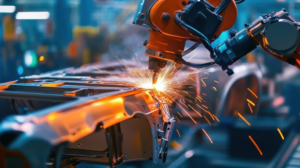
Conclusion:
In high-precision sectors, vacuum welding is a game-changing technique that provides unmatched advantages like excellent weld quality, little contamination, and the capacity to fuse materials that are challenging to weld under typical circumstances. Particularly in crucial applications like aerospace, electronics, medical devices, and energy systems, vacuum welding guarantees the dependability and durability of welded components by establishing a regulated, contaminant-free environment.
Although vacuum welding has certain difficulties, such as high initial prices, specialized equipment, and handling complexity, ongoing developments in the field, such as automation, enhanced vacuum technology, and hybrid processes, are expanding the realm of what is possible. Vacuum welding will become more important as industries continue to change and seek better performance, opening up new opportunities for accuracy, productivity, and material compatibility.
This blog was helpful? Let us know by commenting below.

